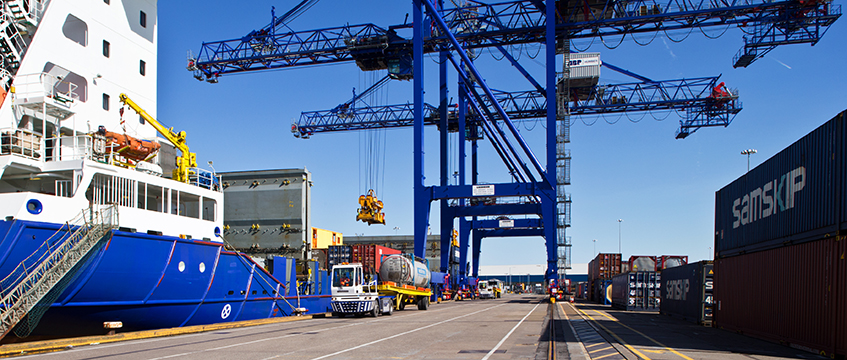LISTEN If sky-high costs for borrowing and building materials and a planning system that has been bordering on the Kafkaesque since the start of lockdown represent a perfect storm for industrial development, is it time to look to a potentially untapped reserve in the shape of land in and around our ports?
One man who certainly thinks so is Greg Lacey, head of property at the Humber operations of Associated British Ports. For Lacey, ports offer a powerful combination of plentiful, low-cost land ripe for development where tenants can take advantage of strong connectivity and cheap, green energy.
Not only this, but they can play a powerful role in regenerating long-neglected coastal communities with high value jobs in unexpected areas.
It is a powerful pitch, but then ABP is a powerful company. It is the largest port operator in the UK with 21 ports handling an annual £150bn of trade.
It owns almost 10,000 acres of land with a further 2,500 acres landbanked for use for commercial development and has recently announced a new property strategy to move beyond estate management into asset and development management in order to make that land work more smartly for it.
Space race
As Lacey says, if you are looking for space, ABP has it.
“Ports naturally have greater land availability around them than the regional cities, the Golden Triangle, and in the South East and London, so for those companies that are looking to put down serious requirements – above 100,000 sq ft – the expansion space is there,” he says.
“We have minimal competition for land acquisitions and the importance of that is that it is keeping the land value low to make sure development schemes are viable.”
With biodiversity net gain regulations due to come into play next year, Lacey is aware of the pressure affecting large developments.
He says: “Build costs are levelling out but they are not going to return to previous levels. We have now also got considerations for BNG. Every developer across the UK is feeling the difficulty of making schemes viable.”
A lot of ABP’s ports have permitted development planning rights so 100,000 sq ft sheds are generally a straightforward process.
Getting connected
One of the big sells with ports is connectivity, where road and rail are met with sea links for both import and export. Last summer German company Knauf signed a prelet for a plasterboard manufacturing plant at ABP’s Newport site, where it can offload gypsum, a key ingredient in plaster, directly from ships.
As well as manufacturing, Lacey also believes logistics are a key part of the mix. It is a sector traditionally associated with centralised locations away from the coast, but Lacey sees otherwise.
“The talk has traditionally been about last-mile logistics,” he says. “But we’re talking about first-mile logistics driven by imports and exports and the need for supply chain resilience.”
And there are also opportunities for regeneration in parts of the country perhaps not traditionally considered a natural leader in the scientific or creative industries.
Grimsby in Lincolnshire, for example, is the largest European hub for the offshore wind industry but its dock also contains a historic area called the Kasbah ,which was recently chosen by Netflix to film the series Bodies.
Lacey believes in the potential for a Grimsby film and television quarter with new build studios.
He says: “I think what we will end up with is a focus on the offshore and wind industry [and] hopefully a prosperous and growing film and TV sector and if we get that right then the job creation and the economic spend is huge. We’re talking hundreds of millions.”
Green energy is also a big part of the mix. ABP is committing £2bn in reaching net zero by 2040.
Projects include a £1.4bn project in Immingham, Lincolnshire, where it is importing ammonia from Saudi Arabia to the Humber for conversion to green hydrogen, a floating offshore wind project in Port Talbot, and installing solar panels on warehouses across the estate.
Upgrading the grid
Most of the ports operate on their own grid, so electricity from these renewable sources is fed into that grid, meaning power can be offered to tenants at a more competitive rate.
Lacey believes government support is needed to improve the National Grid infrastructure to match the potential for green power generation, however, likening the current set up to trying to drain an Olympic sized swimming pool through a garden hose.
With more than 10,000 acres of useable land, a range of potential uses for that land and a commitment to make it as environmentally friendly as possible, ABP has a sizeable task ahead. The next step in its property strategy, says Lacey, is appointing a national agent to work alongside local agents to build a distinct brand for each of its development sites.
It is an appointment that perhaps could provide a valuable port in today’s economic storm.
To send feedback, e-mail jim.larkin@eg.co.uk or tweet @EGPropertyNews











